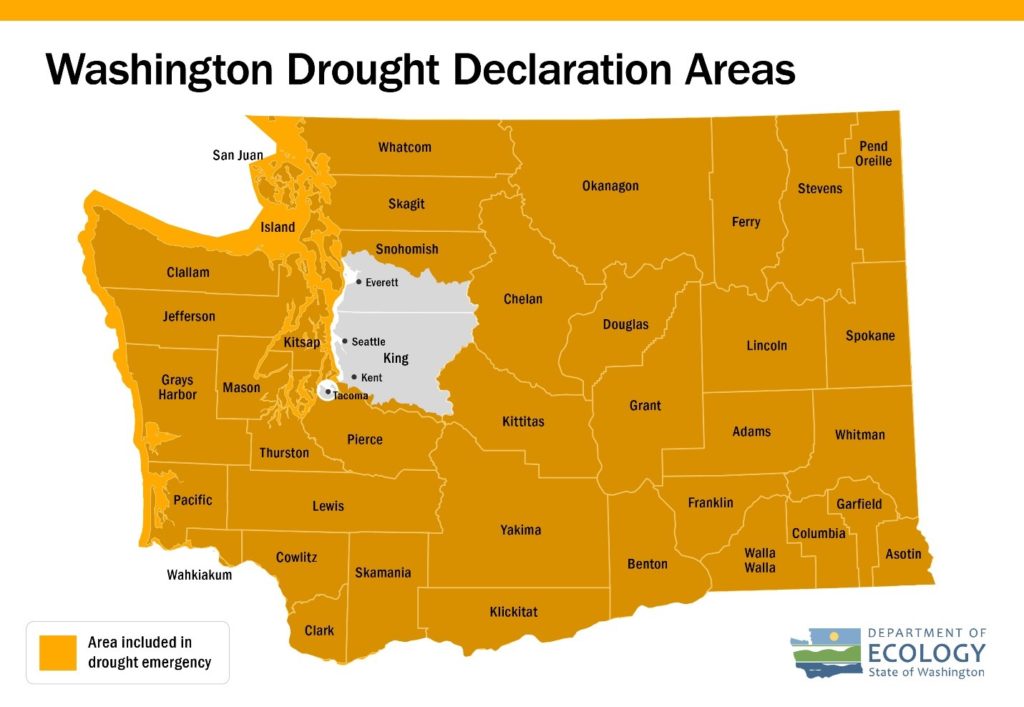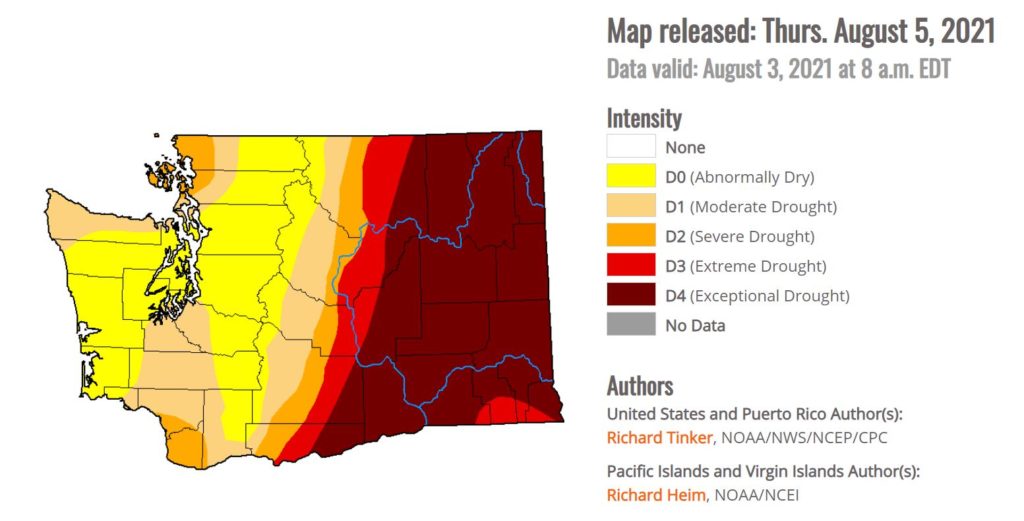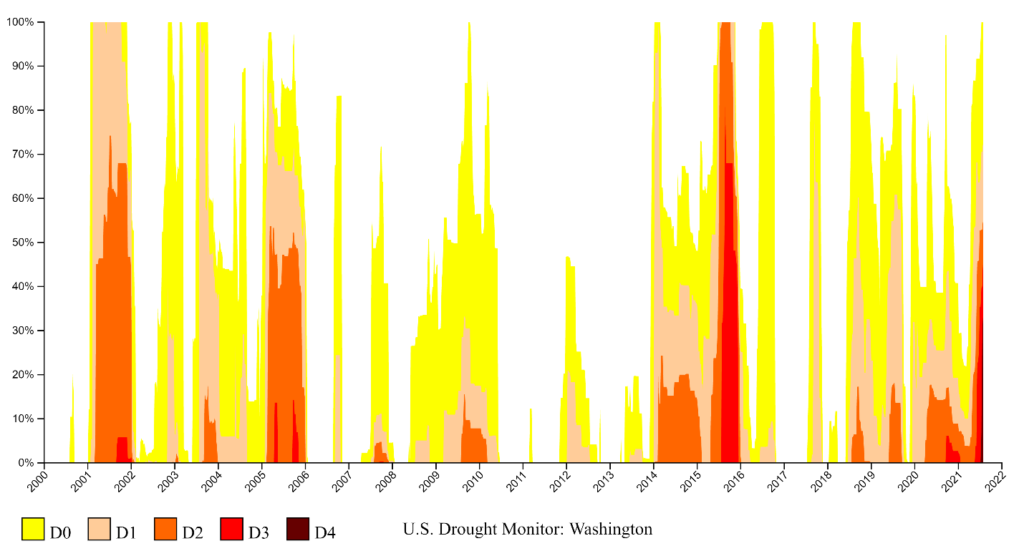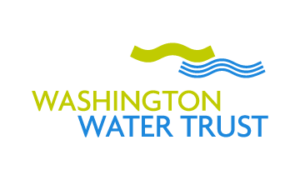Author: Aiman Shahpurwala, WWT Data Analyst
On July 14th the Washington State Department of Ecology declared a drought emergency for the entire state with the exception of Seattle, Tacoma, and Everett. Despite substantial snowpack accumulation over the winter and promising water supply forecasts, the second driest spring in Washington since 1895 combined with high temperatures this summer has led to acute snow melt and critical conditions for Washington’s freshwater.

Eastern Washington is struggling in particular with the U.S. Drought Monitor showing “exceptional drought” for the region (Figure 2).

This is the first time the state of Washington has shown “exceptional drought” (D4 classification) since the U.S. Drought Monitor launched in 2000 (Figure 3). Furthermore, according to NOAA’s Drought Termination and Amelioration Tool there is very low probability of the drought ending over the next three months, particularly in eastern Washington.

Drought Impacts
The impacts of this year’s drought are far reaching. Farmers and ranchers are experiencing crop and livestock loss due to the high temperatures and lack of water. Low flows and rising surface water temperatures are producing conditions lethal to salmon. The drought has also created high fire risk, and according to Washington Department of Natural Resources, nearly 300 active fires were reported within the month of July alone.
August and September represent the fish critical season, where many fish, particularly threatened salmon populations, migrate upstream to spawn. Many scientists and natural resources managers are now concerned that there will not be enough water during this fish critical period for their successful migration, further damaging the already declining fish populations.
The conditions we are seeing this summer here in Washington highlights the urgent need to restore as much water as we can to Washington’s rivers and streams as soon as possible to build climate resiliency for Washington’s rivers, streams and fish.
Submit Your Observations
If you are experiencing the impacts of drought in your area please report these conditions and impacts to the Drought Impact Reporter – Submit a Report. The Washington State Department of Ecology uses these reports to better understanding how various sectors are impacted by drought in the state.
